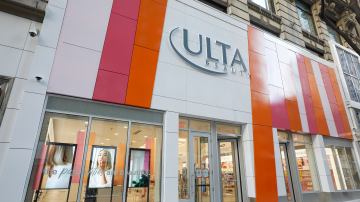Since Donald Trump reignited tariff threats earlier this month, fashion brands have been scrambling to navigate the fallout. Tariffs aren’t just abstract policy shifts — they hit where it hurts: supply chains, product pricing and profit margins. Enter tariff engineering, a behind-the-scenes strategy that has quietly become a go-to for brands trying to stay afloat.
So, what exactly is tariff engineering?
Think of tariff engineering as a bit of creative problem-solving. It’s when brands design or tweak product composition to fit into more favorable categories in the Harmonized Tariff Schedule. The HTS is an internationally standardized system that classifies traded goods and determines the corresponding duty rates. Sometimes, this means modifying materials or features, while other times, it’s about classifying goods differently to fall under a lower duty rate. Favorable categories typically carry lower duties or are exempt from special tariffs, making them attractive for cost-saving. With tariffs sometimes spiking as high as 100%, that’s not just smart — it’s survival.
“Since 2018, the U.S. has slapped additional duties ranging from 7.5%-50%, and even up to 100% in extreme cases, on products from various countries,” said Mario Torrico, attorney at legal firm ArentFox Schiff. “Companies have been working overtime to reduce their duty liability, and tariff engineering has become a key tactic.”
How are fashion brands using it?
It’s all about the details. Adding a small percentage of synthetic materials to a garment, for example, can nudge it into a lower tariff bracket. “We’ve seen brands ingeniously modify products to fit into more favorable HTS classifications,” Torrico said, although he declined to share which brands have done so. But don’t mistake ingenuity for a free pass. “While it’s common, it’s not always legal,” he said.
The legal tightrope here is all about intent and transparency. “Legitimate tariff engineering doesn’t allow importers to defraud Customs through artifice or deceit,” Torrico said.
Real-world cases from other industries highlight the risks. In March 2024, Ford Motor Company paid $365 million to settle allegations of misclassifying cargo vans to dodge higher duties. In June 2024, PetroChina International America Inc. faced a $14.5 million fine for misclassifying diesel fuel exports. These examples show that even major corporations aren’t immune to the consequences of crossing legal lines.
Where’s the line between smart strategy and shady practice?
It’s murky. The legal framework is complex, and each case is product-specific. But the general rule? Don’t try to outsmart Customs with deceptive tricks. “Fashion brands considering this strategy should consult with legal teams,” Torrico said. With the Trump administration’s trade policies still in flux, legal and compliance teams are essential players in the game.
What’s does this mean for brands facing the tariff squeeze?
Brands can’t afford to ignore tariff engineering, but they also can’t afford to get it wrong. “The unpredictability of trade issues means brands need to anticipate different scenarios and quickly adapt to changes,” Torrico said.
That requires a dual approach: smart legal strategies to minimize costs and cutting-edge tech to protect against counterfeits. As tariffs rise and supply chains evolve, the fashion industry will need to stay agile, blending compliance and innovation to stay ahead of the curve.




